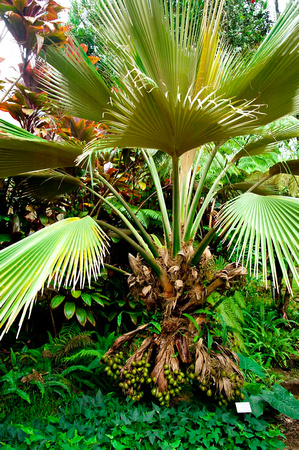Loulu Palm-Native Hawʻn Palm-1351
THE Loulu Palm.
Loulu palms are the only palm native to Hawaii. People think coconuts (niu) are native, but they had to be hand-carried here by early Polynesian voyagers. In fact, coconuts were very hard to get to Hawaii in a growable condition, but that's another moolelo (story).
Loulu are called Pritchardia by scientists, and we have about 16 species of this lovely fan palm here in Hawaii. A few related species are found in Fiji and Tahiti.
Loulu were once so common in Hawaii that there were forests of them. One place to see loulu palms like in the old days is Huelo islet off the north cliffs of Molokai. It is a steep, clifflike island with the deepest-blue ocean surf surging around it. No goats, pigs or rats are there, and the whole island is covered with loulu.
Loulu are grown in home and botanic gardens. Some still survive in the wild, but they face many threats, especially rats, which eat the seeds, flowers and keiki loulu palms. Pigs, goats and people like to eat them, too. People are the worst threat to loulu and other native plants, as we cut down trees, bulldoze, set fires, import alien weeds and build things where forests once grew.


